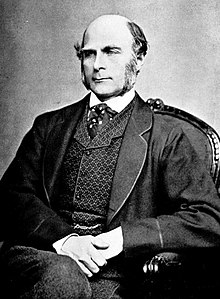Historiometrie

Historiometrie zkoumá kreativitu, její příčiny a kontexty v dějinách kultury a v biografii géniů, s využitím statistických metod. Ústředním tématem historiometrie jsou vývoj talentu a individuální i společenské předpoklady tvořivosti.
Vznik
[editovat | editovat zdroj]První historiometrickou studií byla práce belgického matematika Adolpha Queteleta o vztahu mezi věkem a tvůrčími výkony velkých anglických a francouzských dramatiků. Skutečnou popularitu oboru však zajistil Francis Galton svou studií o dědičnosti geniality z roku 1869. Počátkem 20. století ji rozvíjel Frederick Adam Woods, který zavedl i termín historiometrie.
Současný výzkum
[editovat | editovat zdroj]Předními současnými historiometriky jsou Dean Keith Simonton a Charles Murray. Simonton definuje historiometrii jako kvantitativní metodu statistické analýzy retrospektivních dat. Historiometrie hledá transhistoricky invariantní zákonitosti tvořivosti a vůdcovství, která jsou platná napříč různými epochami a kulturami. Simonton zformuloval deset takových zákonitostí, které vyplynuly z dějinných dat.[1]
Murray v knize Human Accomplishment zkoumal 4000 největších světových osobností věd, umění a filozofie v uplynulých 3000 letech. Seřadil je podle množství pozornosti, která jim je věnována v pramenech (například nejcitovanějším biologem je Darwin, matematikem Euler, výtvarníkem Michelangelo, filozofem Aristoteles, fyziky Newton a Einstein, hudebníky Mozart a Beethoven). Murray analyzoval typ společnosti, která je pro tvořivost příznivá.[2]
Odkazy
[editovat | editovat zdroj]Související články
[editovat | editovat zdroj]- Catharine Cox Miles
- Kliometrie
- Psychometrika
Reference
[editovat | editovat zdroj]- ↑ Simonton, D. K.: Genius, creativity, and leadership: Historiometric inquiries. Cambridge, Harvard University Press, 1984.
- ↑ MURRAY, Charles: Human Accomplishment: The Pursuit of Excellence in the Arts and Sciences, 800 BC to 1950. HarperCollins, 2003. 688 s. ISBN 978-0060192471.
Externí odkazy
[editovat | editovat zdroj]Text is available under the CC BY-SA 4.0 license; additional terms may apply.
Images, videos and audio are available under their respective licenses.
